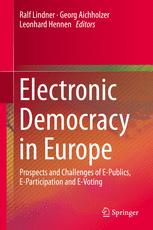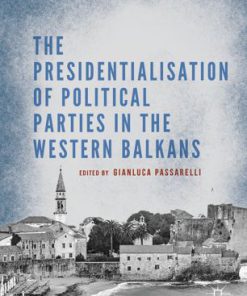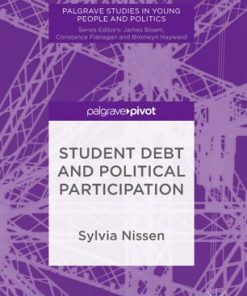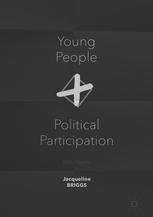Organizing political parties representation participation and power 1st edition by Susan Scarrow, Paul Webb, Thomas Poguntke 0192528810 9780192528810
$50.00 Original price was: $50.00.$25.00Current price is: $25.00.
Organizing political parties : representation, participation, and power 1st edition by Susan E. Scarrow, Paul D. Webb, Thomas Poguntke – Ebook PDF Instant Download/Delivery: 0192528810, 9780192528810
Full download Organizing political parties : representation, participation, and power 1st edition after payment
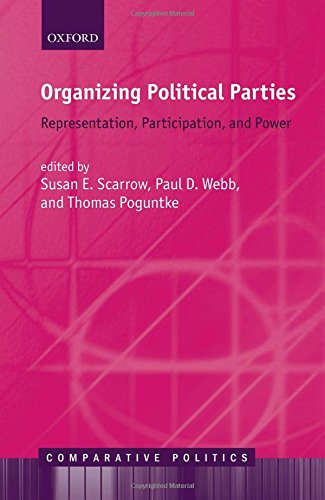
Product details:
ISBN 10: 0192528810
ISBN 13: 9780192528810
Author: Susan E. Scarrow, Paul D. Webb, Thomas Poguntke
Organizing political parties : representation, participation, and power 1st Table of contents:
1. Investigating Party Organization: Structures, Resources, and Representative Strategies
Introduction
Organizational dimensions and organizational change
Addressing the data problem_ The Political Party Database
Explaining parties’ organizational differences and exploring their political consequences
Conclusion
Part 1. How Parties Organize
2. Assessing the Strength of Party Organizational Resources: A Survey of the Evidence from the Political Party Database
The First Sub-Dimension of Party Organizational Resources: Membership
The Second Sub-Dimension of Party Organizational Resources: Money
The Third Sub-Dimension of Party Organizational Resources: Staff
The Fourth Sub-Dimension Of Party Organizational Resources: Basic Units
Ranking The Overall Strength of Party Organizations
Summary and Concluding Comments
3. Which Face Comes First? The Ascendancy of the Party in Public Office
Introduction
Hypotheses and Research Design
Party Membership
The Dependence on State Subsidies
Party Staff
Conclusions
4. The Paradox of Party Funding: The Limited Impact of State Subsidies on Party Membership
Introduction
Patterns of Party Financing
State Subsidies and Party Organizations
Conclusion
5. Still Connecting with Society? Political Parties’ Formal Links with Social Groups in the Twenty-First Century
Introduction
Linkage Mechanisms In An Historical Perspective
Contemporary Formal Linkage Mechanisms: Theoretical Expectations
The Substantive Effects of Formal Linkage Mechanisms
Operationalization, Data, and Methods
Mapping Formal Linkage Mechanisms
Examining Variations In Linkage Mechanisms
The Effects of Formal Measures
Conclusions
6. Varieties of Intra-Party Democracy: Conceptualization and Index Construction
Introduction
Conceptualizing Ipd
Measuring Intra-Party Democracy
Intra-Party Democracy In The Real World: An Empirical Overview
Conclusion
7. Patterns of Intra-Party Democracy across the World
Introduction
Normative Considerations and Conceptualization
Reasoning About Hypotheses
Turning The Tables: Ipd As An Independent Variable
Operationalization Of Additional Variables
The Empirical Reality Of Ipd
Conclusions
Part 2. The Impact of Party Organization
8. Party Finance and Perceived Party Responsiveness
Introduction
The Financial Dimension Of Party Organizations: The Cartel Thesis And Electors’ Perceptions Of Party Responsiveness
Hypotheses, Data, and Methods
A Multivariate Model of Party Responsiveness
Conclusion
9. Candidate Selection Rules and Democratic Outcomes: The Impact of Parties on Women’s Representation
Introduction
Candidate Selection and the Importance of Parties as Gatekeepers
Hypotheses: Centralization, Inclusiveness, and Party Rules
Data: Methods and Measures
Results
Conclusion
10. Rules of Engagement? Party Membership Costs, New Forms of Party Affiliation, and Partisan Participation
Introduction
Party Membership as a Political Consumption Good
Party Affiliation Rules: Variations and Expected Consequences
Affiliation Rules in Contemporary Political Parties
The Political Consequences of Party Affiliation Rules
Conclusion
Financial Costs
Procedural Costs
Benefits
Alternative Affiliation
Relative Number of Party Members (M/V)
Aggregate Activism
Individual Party Membership
Individual Party Activism
11. The Effects of Manifesto Politics on Programmatic Change
Introduction
Theory and Hypotheses
Data, Descriptive Analysis, and Operationalization
The Impact of Manifesto Politics on Programmatic Change
Interpretation and Critical Evaluation
12. Party Organization and Party Unity
Explaining Voting Unity
Party Unity and Rice Measures
Case Selection and Data
Analysis
Discussion and Conclusion
13. Conclusion: The Study of Party Organization
Introduction
Broadening the Study of Parties as Organizational Actors
Empirical Evidence: How Well do the Ppdb Parties Match Ideal Types?
Dimensions Rather Than Ideal Types?
Final Thoughts
14. Afterword
The Official Story
National Differences
Assessing the Ppdb
Ideal Types and Evolutionary Models
The Cartel Party
Concluding Remarks
People also search for Organizing political parties : representation, participation, and power 1st:
how important are political parties to the organizing of congress
organizing government political parties
how do political parties organize the government
organized political parties enhance american democracy by
organization of political parties ap gov
Tags: Organizing, political parties, representation, participation, power, Susan Scarrow, Paul Webb, Thomas Poguntke
You may also like…
Politics & Philosophy
Politics & Philosophy - Social Sciences
Roots for Radicals Organizing for Power Action and Justice Edward T. Chambers
Politics & Philosophy
Uncategorized
The Presidentialisation of Political Parties in the Western Balkans Gianluca Passarelli
Children's Books
Life Narratives and Youth Culture: Representation, Agency and Participation 1st Edition Kate Douglas
Cookbooks
Uncategorized
Student Debt and Political Participation 1st Edition by Sylvia Nissen ISBN 3319963228 9783319963228
Politics & Philosophy
Politics & Philosophy






